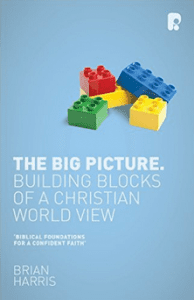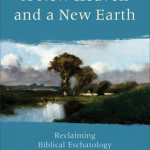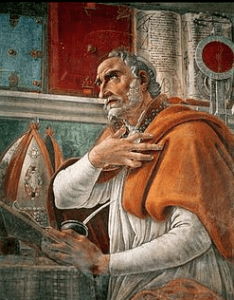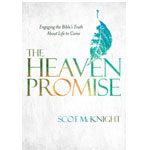 Part two of the new book God and the Cosmos: Divine Activity in Space, Time and History by Harry Lee Poe and Jimmy H. Davis asks questions about the way God interacts with the world. They begin with a brief discussion of the features of modern cosmology – the physics and chemistry behind the emergence of the earth on which we find ourselves. Chapters 5: Cosmology and the Emergence of Everything, 6: God, Uncertainty, and Openness, and 7: God and Life provide very nice lay-level overviews of key concepts in physics, chemistry, and evolutionary biology. Today I will concentrate on the Chemistry and Physics in Chapters 5 and 6, leaving biology for a future post.
Part two of the new book God and the Cosmos: Divine Activity in Space, Time and History by Harry Lee Poe and Jimmy H. Davis asks questions about the way God interacts with the world. They begin with a brief discussion of the features of modern cosmology – the physics and chemistry behind the emergence of the earth on which we find ourselves. Chapters 5: Cosmology and the Emergence of Everything, 6: God, Uncertainty, and Openness, and 7: God and Life provide very nice lay-level overviews of key concepts in physics, chemistry, and evolutionary biology. Today I will concentrate on the Chemistry and Physics in Chapters 5 and 6, leaving biology for a future post.
Poe and Davis emphasize two key features in our scientific view of the cosmos. First, there is a direction to time. The universe is not stationary or cyclical, but directional. The big bang, an expanding universe, the second law of thermodynamics (entropy or “disorder” will increase), and the progressive complexity of accessible structures all point to a direction, and potentially to a purpose, in the universe. The fine-tuning of the universe for life is a remarkable feature that has been commented on by many. This does not prove the existence of God, but is consistent with a personal God involved in his creation, and given a belief in God, it does provide insight into the nature of God.
The second feature emphasized by Poe and Davis is the openness of creation. We do not live in a clockwork universe where given knowledge of the initial conditions and the laws of nature the future, exclusive of miraculous divine intervention, is uniquely determined. Intrinsic quantum uncertainty leaves an ontological openness in God’s creation. Chaos – arising from the exquisite sensitivity of nonlinear systems to initial conditions – also leaves an ontological openness in God’s creation. They pose the following questions:
Is nature hermetically sealed with God on the outside?
Or is nature open to activity by God without having to invoke miracles?
And perhaps we can express this a little differently:
Does God intervene in the world or interact with the world?
Poe and Davis note that it is better to view God as one who interacts with the world rather than as one who intervenes in the world. The view of God as intervening in the world or even as allowing openness and free will “betrays a lingering attachment to the old classical deterministic system.”
An intervening God is one who is outside his creation and has to come back into his creation to achieve his purpose. An intervening God is one who, as an expression of his will, sustains the laws of nature (providence) but has to suspend these to achieve his purposes. An interacting God is part of the process from beginning to end.
When Peacocke speaks of a system taking a route “other than it would have been if left to itself to follow its own natural course, without the involvement of divine action,” he suggests that some specific outcome would have occurred had God not acted. The point of chaotic systems is that the system is open and without a predetermined outcome. God’s action would not “change” the outcome because no law of cause and effect has determined a specific outcome. As for the system being denied its choice of what course to take, these chaotic systems have no brain or self-consciousness. They really don’t care. They have no plans. (p. 200)
Although all analogies are imperfect and we must be wary of carrying even this one too far, the action of God in the world is, perhaps, the action of a mind or will within this intrinsic openness, these causal joints, in creation. The evidence or the action of God in the world is known through the revealed mind and will of God, not through the study of physical and chemical processes in the world.
Within the creation the most complete way that God has made himself heard is by furnishing his creation with beings – us – that can discern his meanings. Since the universe, as God’s creation, expresses God’s purpose, God has created humans with the ability to understand God’s self-communication through creation. God is sending signals to humans through the events of the universe’s history, the history of humans and our own personal history; God is sending these signals through a top-down input of information into the universe. (p. 201)
Now Poe and Davis are not denying direct action of God in his creation, and they certainly are not denying the incarnation and resurrection, or regulating these to odd natural events. But they do seem to be saying that we should not be looking for scientific evidence for the existence of God within creation. God makes himself known through relationship with his creatures, humans created in the image of God. Hebrews 11:3 states: By faith we understand that the universe was created by God’s command, so that what is seen has been made from things that are not visible. (HCSB) Poe and Davis note that the word “command” implies a top-down information causality and that “by faith” implies that it takes faith to recognize the world as God’s creation.
To find the personal God of Christianity we look not to creation, or to natural theology, but to God’s self-revelation in interaction with his creatures. This is recorded in scripture.
The next chapter of God and the Cosmos looks at the evolution of life and the role that Poe and Davis see for God in this process. The final chapter looks at God and human history. We will move on to these topics in future posts. But for now…
How do you envision God at work in the world?
Does he intervene, violating the laws of physics?
Does the proposal by Poe and Davis, that his interaction is better considered that of a mind or will directing within the intrinsic openness of nature make sense?
If you wish to contact me directly, you may do so at rjs4mail[at]att.net.
If interested you can subscribe to a full text feed of my posts at Musings on Science and Theology.











